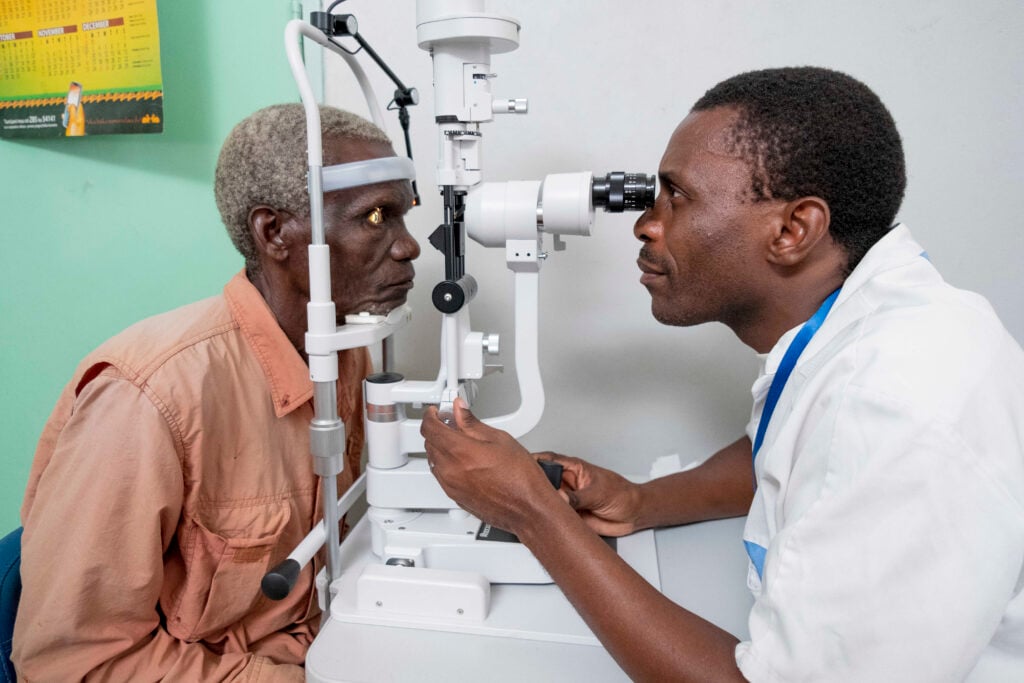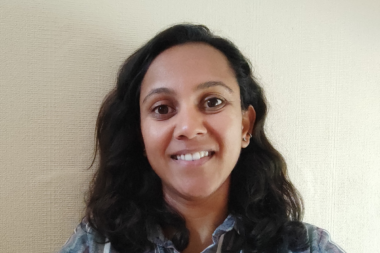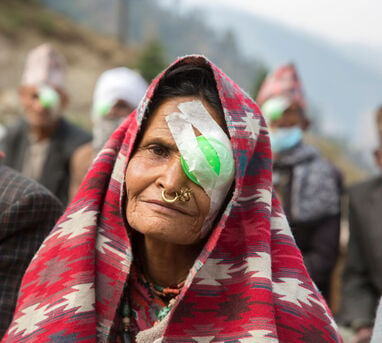At CBM, we believe that everyone deserves the chance to see the world clearly. Today on World Sight Day, Poonam Shah, Inclusive Eye Health Advisor at CBM Global tells us more about several key eye conditions which CBM is working to diagnose and treat.
What is a Cataract? Key Eye Conditions and Treatment Explained

What is a Cataract?
“A cataract is when the natural lens in the eye becomes cloudy and blocks light from entering the eye. If left untreated, the lens becomes completely cloudy, and this can cause blindness.
Around the world it’s estimated that around 65 million people have moderate to severe vision impairment due to cataracts.
Thankfully, a simple procedure can remove that cloudy lens and put a clear acrylic or plastic one in its place to allow light to enter the eye and restore vision.
Cataract surgery costs as little as £24 for an adult and £95 for a child, yet many people can’t afford this surgery, and face a lifetime of avoidable blindness.”

What is Diabetic Retinopathy?
“Diabetic retinopathy is a condition in which people who have poor control of their diabetes can develop leaky blood vessels at the back of their eye. Screening is vital as the condition is very treatable if caught early enough.
However, if left untreated diabetic retinopathy can lead to significant vision impairment and blindness. Tools like the Arclight which CBM is pioneering across the world and other similar equipment are important, to allow medical professionals to pick up changes in the eye before they can have any significant effect.”
What is Retinopathy of Prematurity?
“Babies born prematurely are often given oxygen. Retinopathy of prematurity can occur when a baby born prematurely is given a concentration of oxygen that is too high. This leads to new blood vessels growing at the back of the eye which can eventually pull off the retina, causing blindness.
If diagnosed early enough, a simple laser procedure can stop any more abnormal blood vessels from growing, preventing the retina from becoming detached.”
What is Refractive Error?
“Refractive error is one of the most common causes of vision loss and it occurs when the eye cannot bring an image that the eye is looking at into focus. That could either be short-sightedness (myopia) or long-sightedness (hyperopia):
- Short-sightedness (myopia) is when the eye finds it hard to focus at things in the distance
- Long-sightedness (hyperopia) is when it struggles to focus at things up close
It is estimated that around 123 million people had significant vision impairment as a result of uncorrected refractive errors affecting distance vision. However, both short-sightedness and long-sightedness can often be corrected by prescribing the correct pair of glasses to bring an image into focus. A further 826 million people have unaddressed near vision problems, called presbyopia. This can be corrected simply by providing a pair of reading glasses.”
CBM’s Work as an Eyesite Charity
At CBM, together with our local partners, we are providing sight-saving surgeries, treatments and glasses to improve sight across some of the world’s poorest places. By diagnosing and treating these conditions we are working towards a world where no one is needlessly blind. We help people with a wide range of neglected tropical diseases across the world.
Drawing on our long history we have eye health projects in several countries around the world. Last year we delivered over 1.9 million eye-related services, including over 122,000 cataract surgeries.
Find out more about our sight saving work.
Header image: Dani is examined at Nkhoma Hospital, Malawi. ©CBM UK/Daniel Hayduk



